| |
|
|
| |
New
Zealand 2014
|
|
| |
|
|
| |
|
|
| |
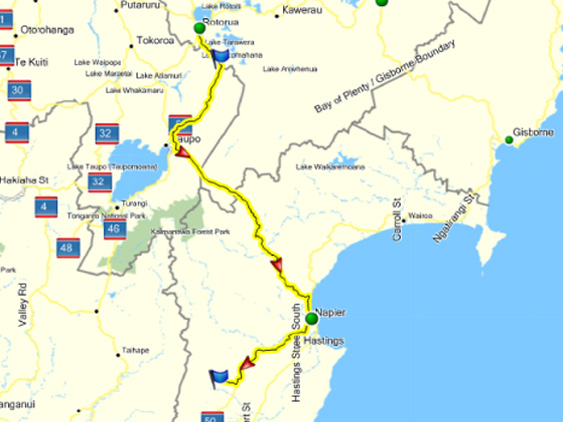 |
|
| |
Today
we had originally planned as a really long day out around highway 35 that
runs the coastline through Te Kaha then back down to Gisborne, whose claim
to fame is 'the first city to see the sun'. But tonight is our first 'farm'
stay which is up a gravel road 'sight unseen' and they will have supper
for us. So the thought of negotiating a gravel road unknown to us in the
dark and getting in really late does not make a lot of sense. Sometimes
on a trip you just have to change plans to deal with realities, so we craft
a shorter route that should get us where we need to be at reasonable hour
with some great roads and sights along the way. Mick and Teresa have done
an outstanding job for breakfast. |
|
| |
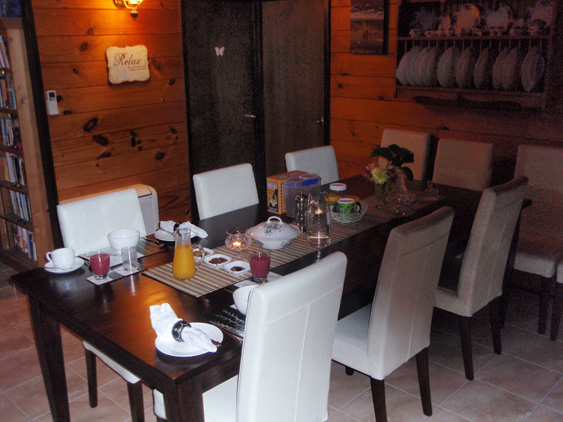 |
|
| |
There's fruit, yogurt,
cereal, fresh smoothies and of course ... |
|
| |
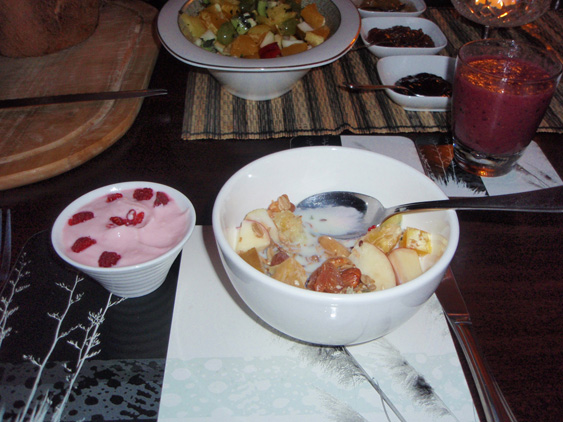 |
|
| |
pig
meat and hen fruit with freshly baked croissants. I figure I should be able
to travel a day's journey in the 'strength of this meat'. |
|
| |
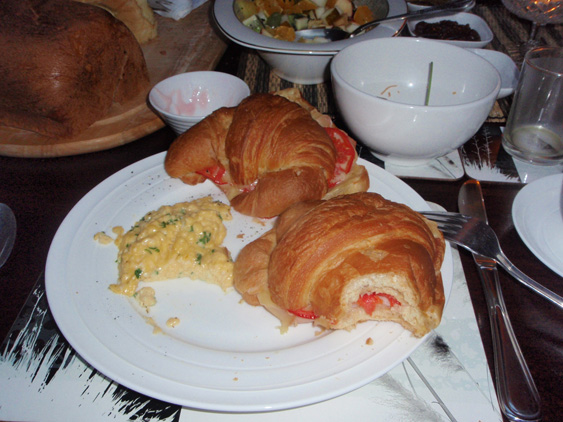 |
|
| |
After the scrumptious
breakfast, they take us our for little walk around the place. As soon as
Teresa is seen by the ducks, it's obvious who feeds them. All their little
eyes are directed to her in urgent anticipation. |
|
| |
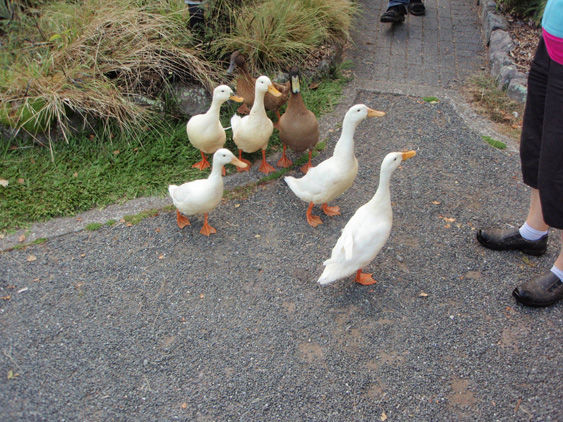 |
|
| |
They also have a
couple of sheep that loved to be petted. |
|
| |
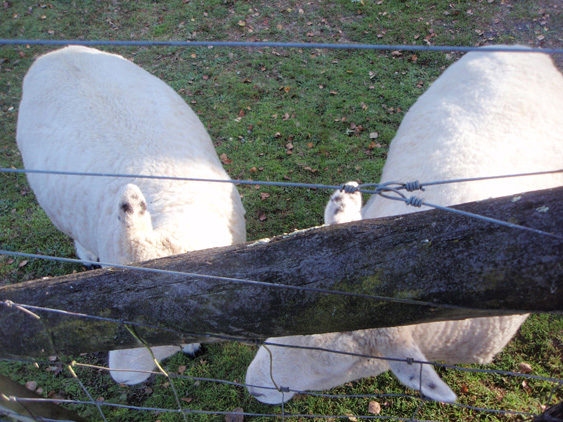 |
|
| |
But Chico and Pepper,
since they are the proprietors after all, do not mingle with the common
folks like us. They keep their distance so as not to be contaminated or
touched by the peasants. |
|
| |
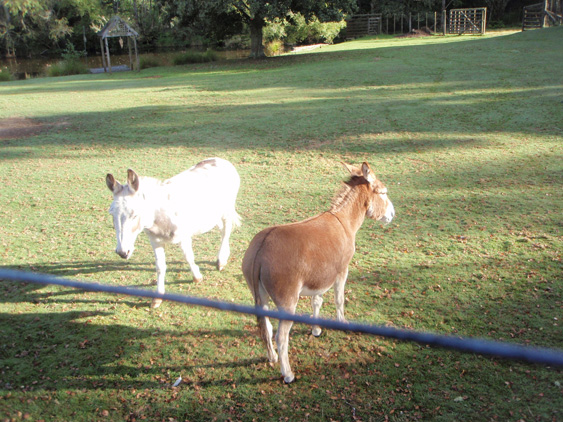 |
|
| |
They
take a great shot of us in front of the flags before we hit the road. |
|
| |
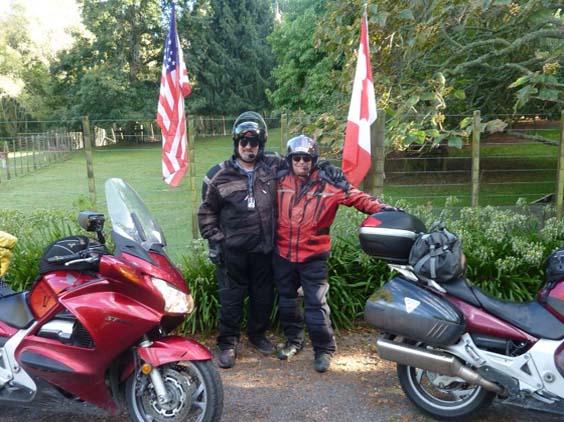 |
|
| |
Mick and Teresa
also have given us a couple 'must see places' along our way which we really
appreciate. Once again I recognize that there is no substitute for local
knowledge. We thank them for their many kindnesses and we're off for another
day of splendid riding. |
|
| |
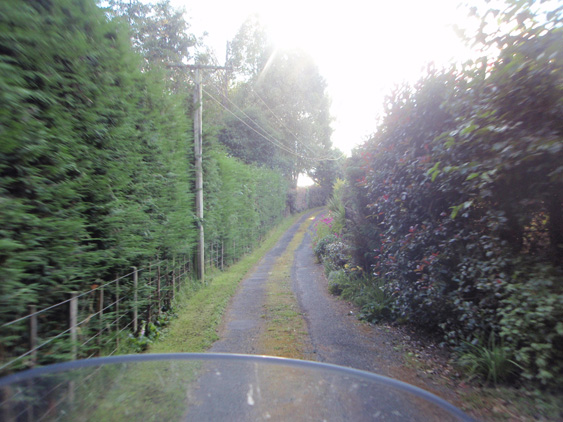 |
|
| |
But after we pull
out of their quiet lane, we get a quick shove back to reality of Rotorua. |
|
| |
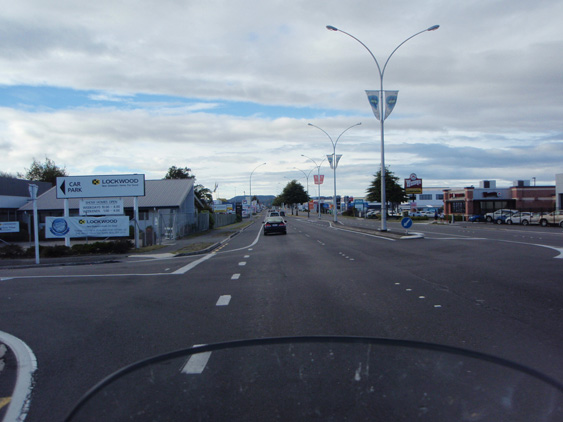 |
|
| |
And we get the reminder
to drive on the left - or the 'proper' side of the road versus the 'right'
side of the road ... |
|
| |
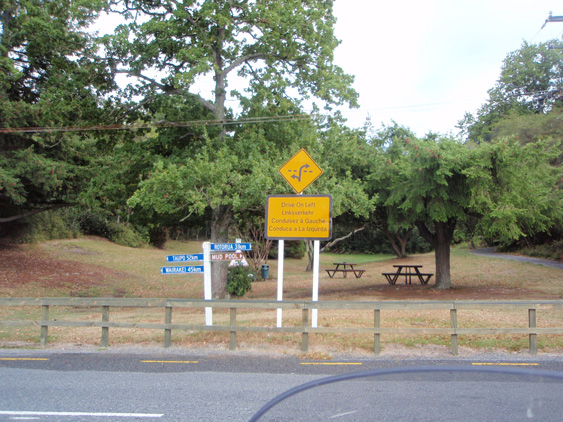 |
|
| |
Our first stop is
at WaioTapu visitor's
center. It is the gateway to one of the most active thermal areas on the
islands. |
|
| |
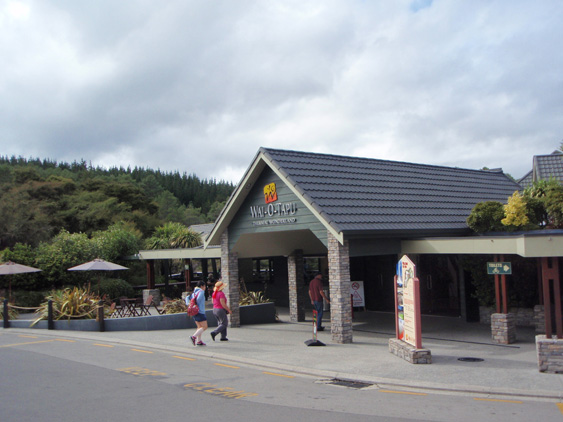 |
|
| |
One of the attractions
is a nearby geyser. I'm a bit mystified as I can't figure out if it's like
Old Faithful and goes off at fairly predictable times or not. |
|
| |
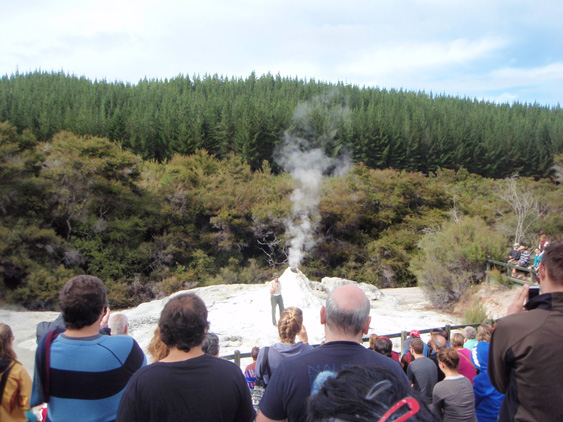 |
|
| |
But I soon have
my answer, as the 'guide' dumps some sort of chemicals down the spout and
it answers with a plume of smoke and steam. |
|
| |
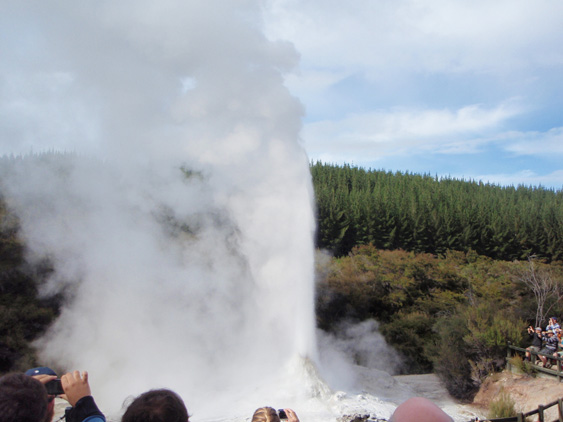 |
|
| |
There
are also some hot springs of sort further down the road so we head that
way. At the parking lot, I see a message on the back of a car that I can
fully identify with ... |
|
| |
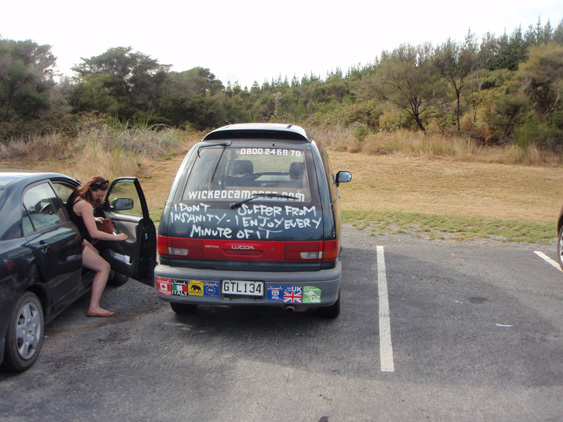 |
|
| |
This is an interesting
sight that reminds me a lot of Mammoth
Hot Springs in Yellowstone but on a more 'liquid' scale. |
|
| |
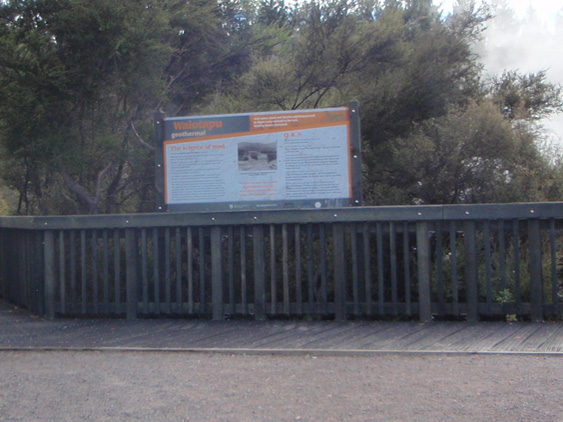 |
|
| |
The bubbling caldron
reeks of sulfur and gurgles and bubbles as the heat meets the water. |
|
| |
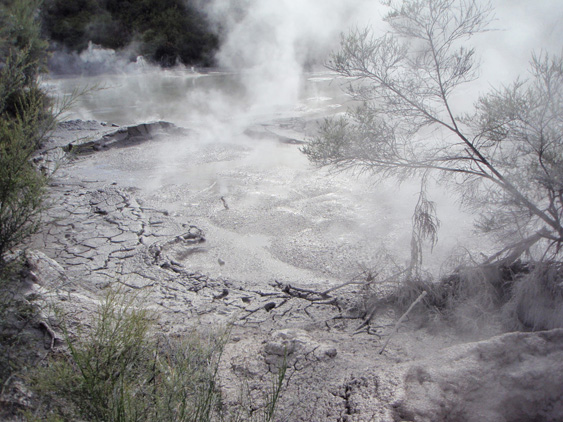 |
|
| |
The whole place
has an eerie feel to it as the vapor rises and coats most everything nearby. |
|
| |
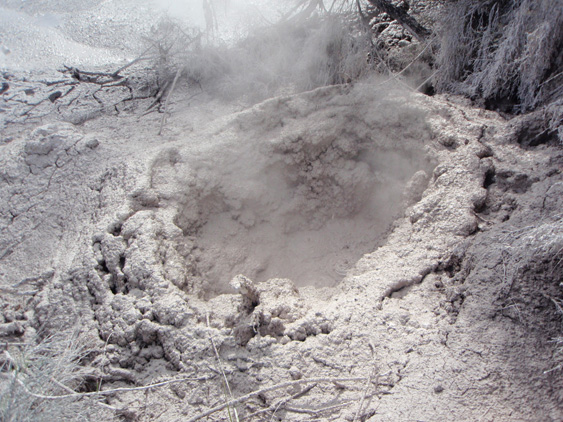 |
|
| |
Not exactly a place
I would want to spend a lot of time near, but very interesting to see nonetheless. |
|
| |
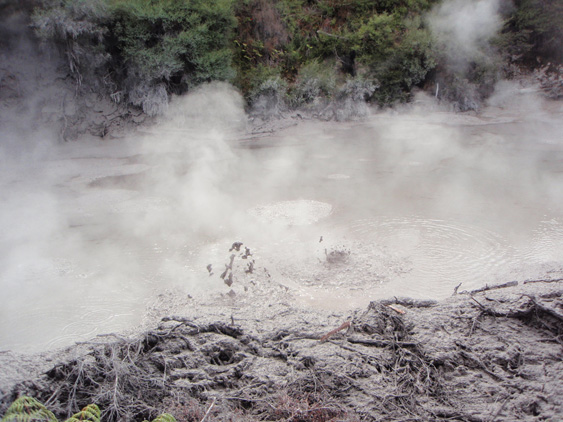 |
|
| |
Soon
we get out heads back out in the wind and come upon another construction
zone. This one is a little longer than previous ones, but fortunately it
is pretty well hard-packed which makes negotiating it a lot easier. |
|
| |
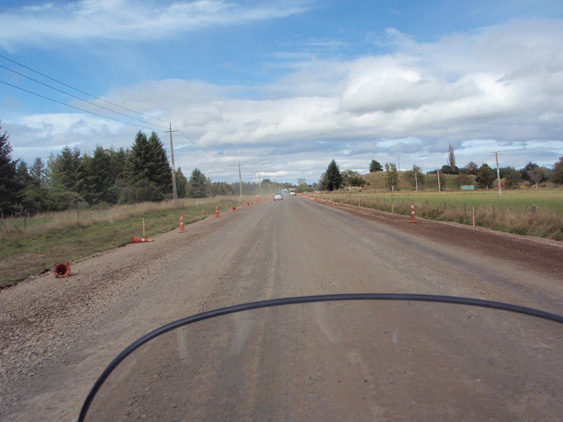 |
|
| |
Out on the road,
our 'route' is suddenly changed. There is a really bad wreck up head, and
they have closed the highway. It's times like these that you suddenly become
very thankful for a functioning GPS system. There is no option but to take
a detour, so a detour it is. |
|
| |
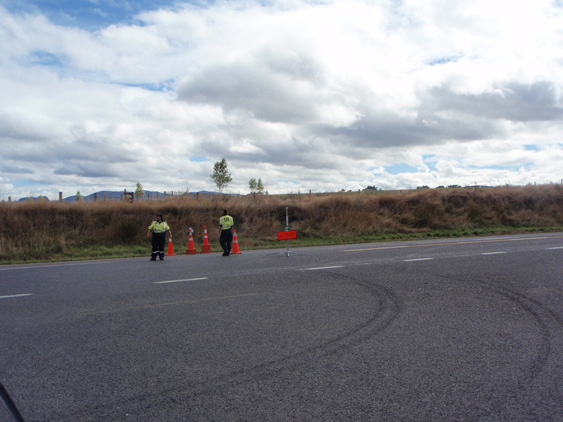 |
|
| |
But it just means
we get to ride roads that we would have otherwise missed. When I see this
stand of trees lined up perfectly with the fence rows, I have to assume
someone planted them just so. |
|
| |
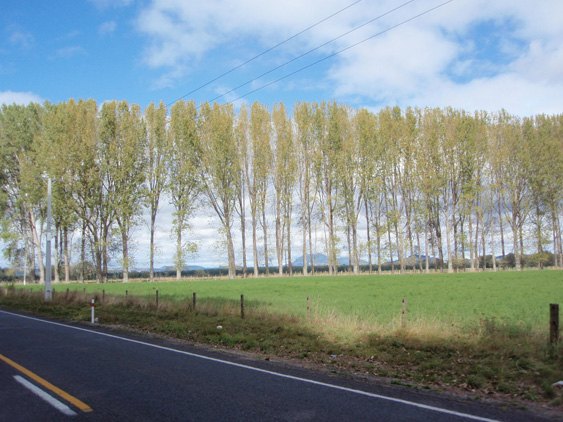 |
|
| |
We also come across
what looks like a nuclear power plant, but I know it is just a cooling tower.
New Zealand does not operate nuclear power stations by choice. |
|
| |
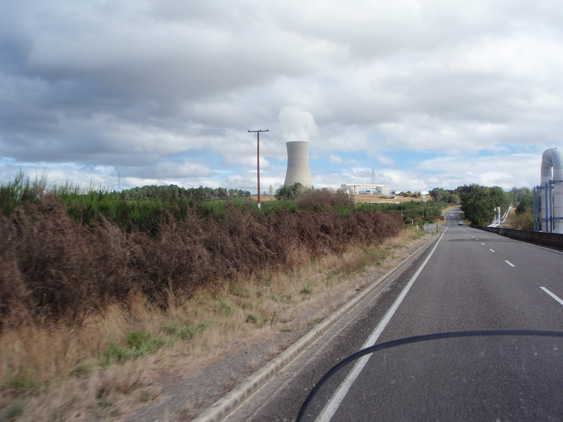 |
|
| |
Once again the sky
does not look promising, but we roll on hoping we will not have to stop
and 'bake in a bag'. |
|
| |
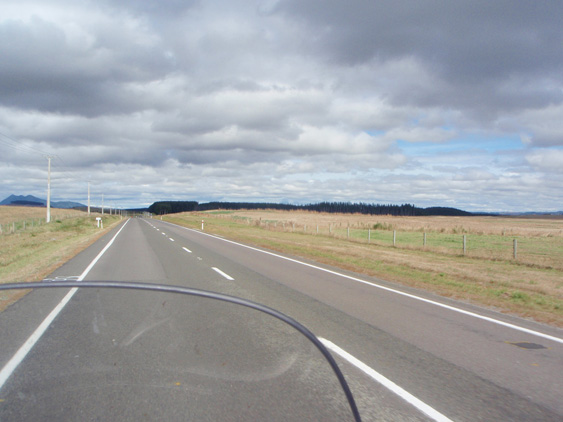 |
|
| |
Again I see off
in the distance another orderly planting of trees. It just makes such good
sense to me and I wonder why folks don't often do the same back home. |
|
| |
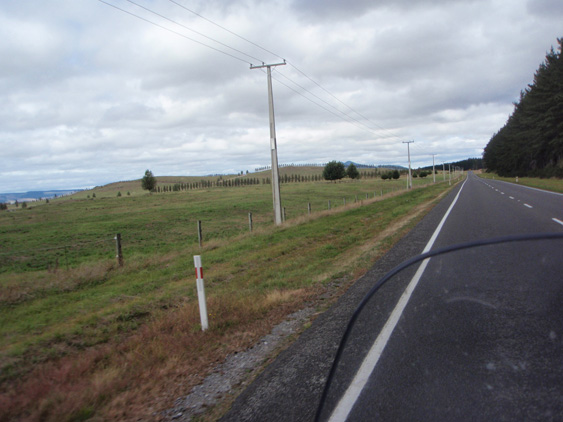 |
|
| |
We are traveling
down the 'Thermal Explorer Highway since we left Rotorua, but .... |
|
| |
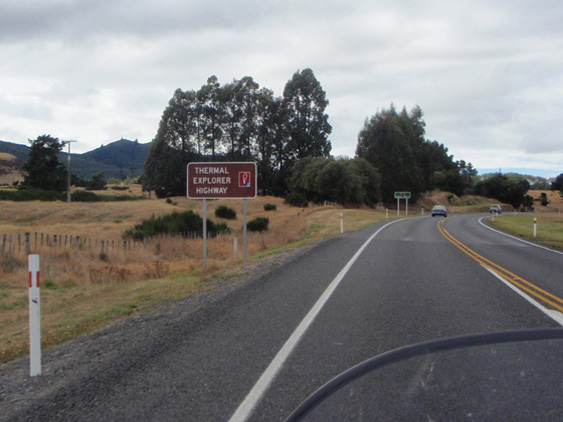 |
|
| |
this is not exactly
the 'thermal' we were expecting to see along the way! |
|
| |
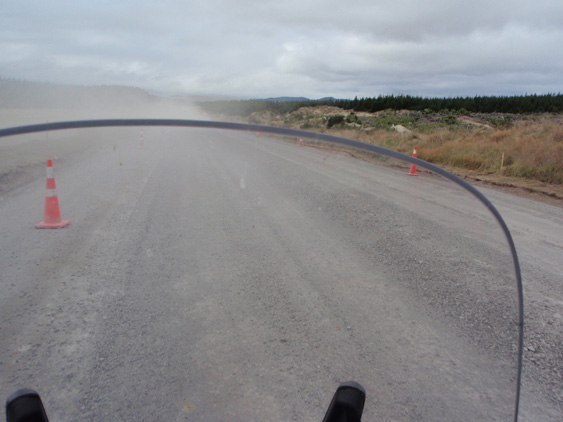 |
|
| |
As we get back into the serious
twisties, we see another reminder that we are in a 'High Crash Area'.
Sometimes the signage makes you think your mother is going ahead of you
and setting them up.
|
|
| |
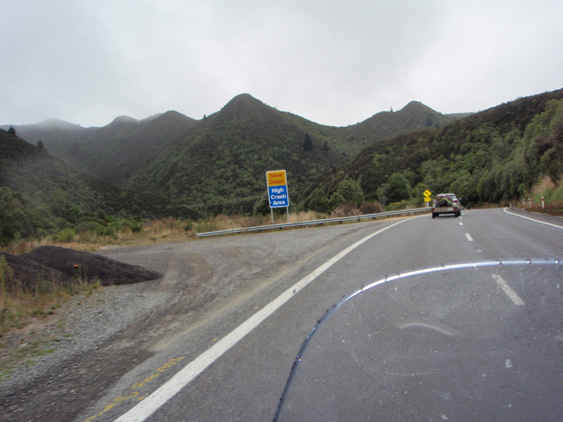 |
|
| |
Soon the weather
catches up with us and it's time to break out the rain suits before we get
soaked. |
|
| |
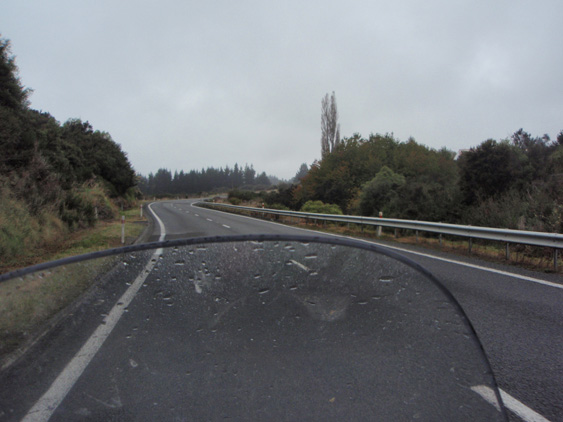 |
|
| |
It actually gets
quite cool as the rain comes in and the altitude increases. Cool enough
that I put on my heated gear for the extra comfort. |
|
| |
 |
|
| |
As we approach Hawkes
Bay, the fog settles in for a while and I am really glad I brought my heated
gear. |
|
| |
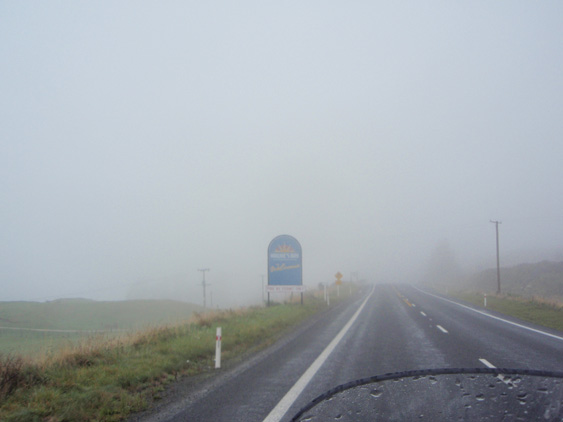 |
|
| |
Up ahead, there's
been another accident but fortunately this time the road is not closed.
It appears just to be where someone went off the road and not much damage
done except to the vehicle. |
|
| |
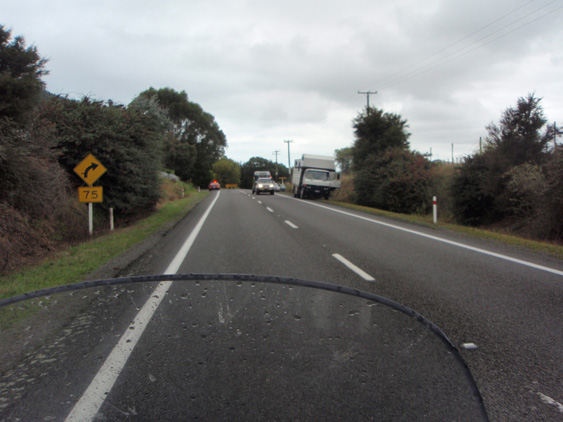 |
|
| |
Soon we are in the
vineyard country of Hawkes Bay. The nets keep the birds from stealing the
grapes when they reach peak ripeness. |
|
| |
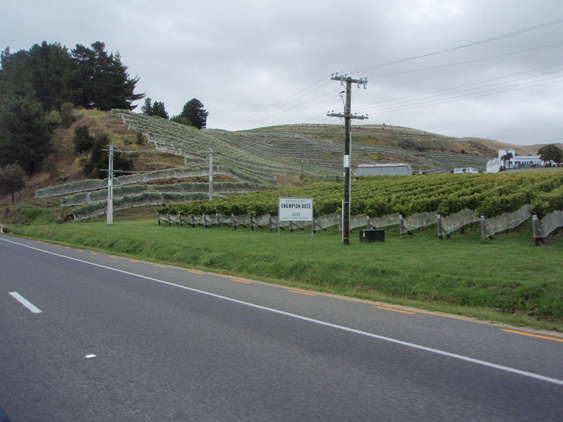 |
|
| |
But just as quickly,
we leave the fertile green of the vineyards for the dusty dry of the valleys. |
|
| |
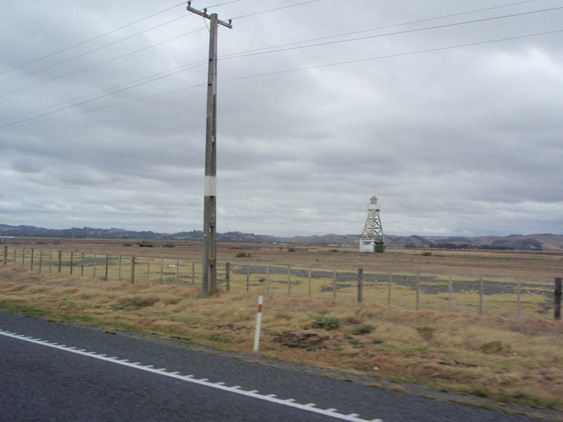 |
|
| |
The
next major stop on our ride today is Napier.
It is a town with an interesting history and a popular tourist stop. In
1931, a major earthquake pretty much leveled the city. At the time, the
Art Deco style of architecture was popular, so it was dominant style used
to rebuild the city. Along with the passage of time, people figured out
that this gave the city a unique look and steps were put in place to preserve
it. |
|
| |
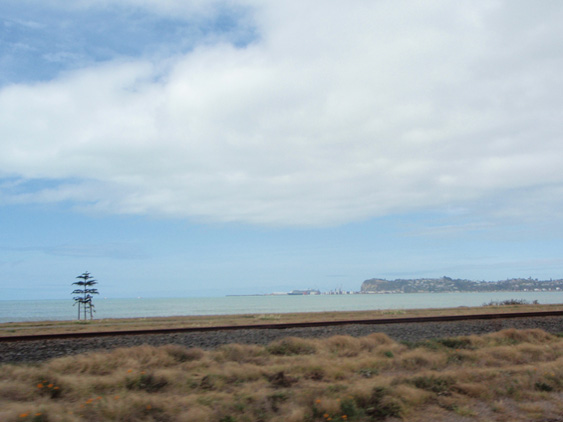 |
|
| |
It is a lovely ocean
side town, much of which now is located at sea level. This puts it in great
danger should a tsunami ever come this way. |
|
| |
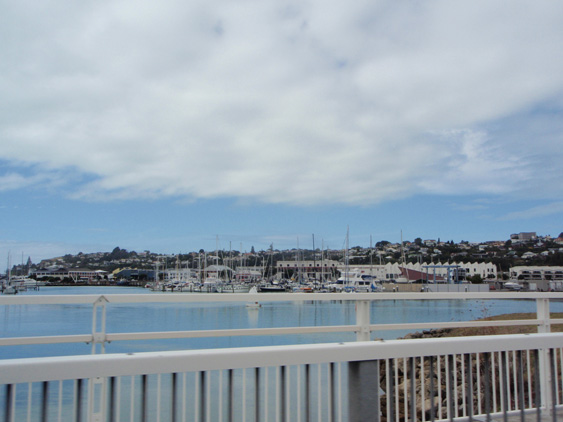 |
|
| |
We find a nice little
park, and decide to take a break and get our bearings. |
|
| |
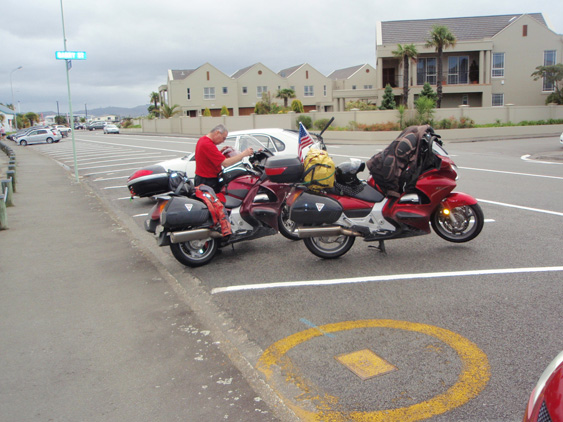 |
|
| |
We find there is
a neat overlook above the city, so we set out to locate it. |
|
| |
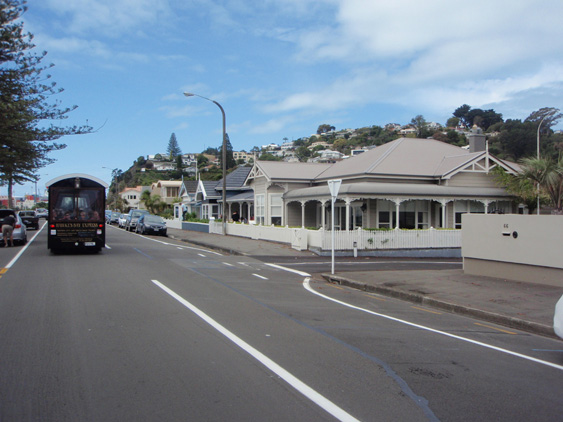 |
|
| |
As with most of
New Zealand, if there is a hill in a city, there will be houses built on
the side of the hill. The road to the top twists and turns between various
houses that seem barely perched on the hillside. |
|
| |
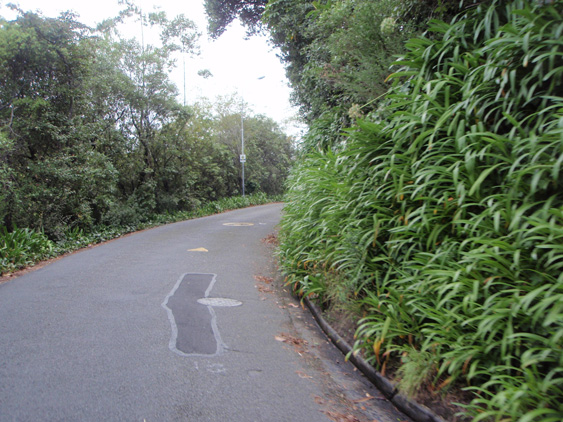 |
|
| |
From the top, we
get a clear view of the Napier Port. It provides launching areas for ... |
|
| |
 |
|
| |
containers of humans
to ... |
|
| |
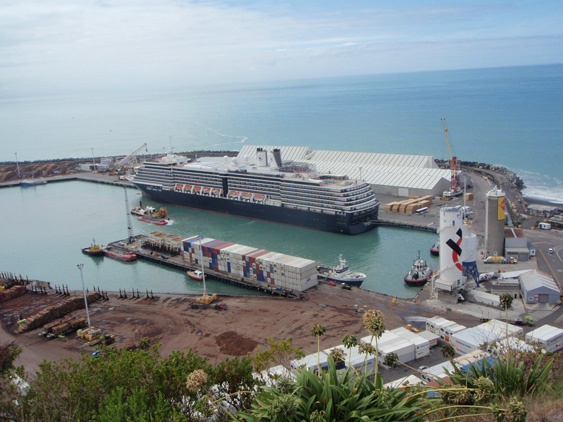 |
|
| |
containers of stuff.
From here it appears to be a really bustling place. |
|
| |
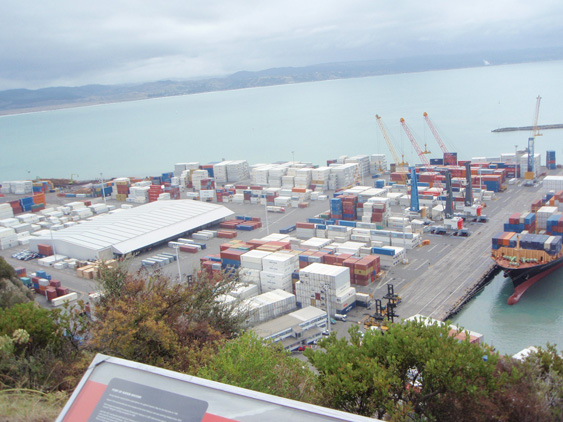 |
|
| |
There is also some
lovely landscaping on top of the lookout in a park. |
|
| |
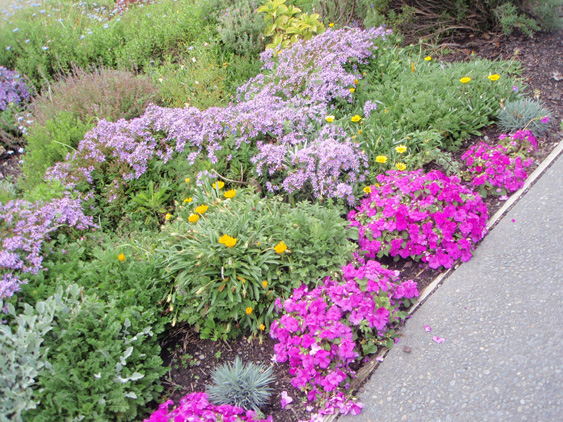 |
|
| |
And a nice mosaic
graces the facility also. |
|
| |
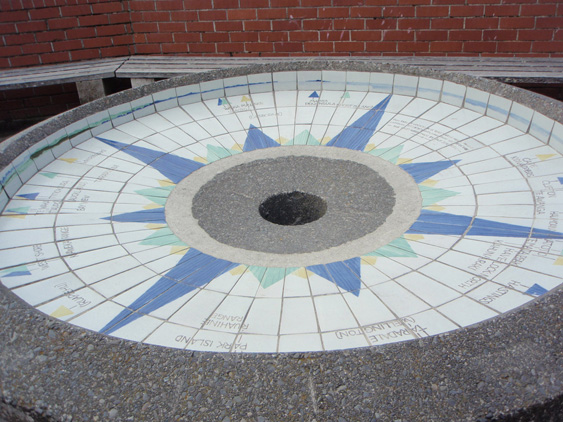 |
|
| |
As we make our way
back down the hill and through the city proper, we can see why Napier is
the art deco capitol of New Zealand. |
|
| |
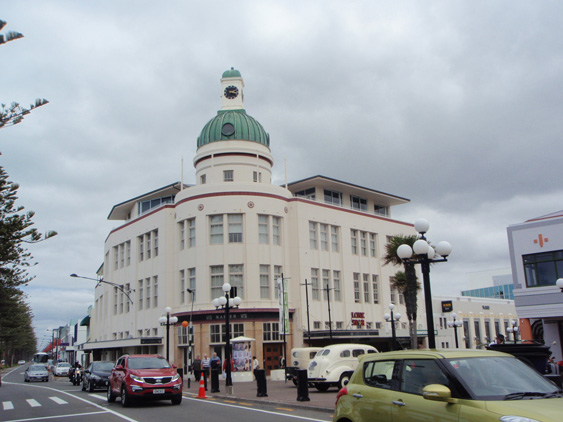 |
|
| |
They have fully
embraced their heritage and reflect even in their street signs. |
|
| |
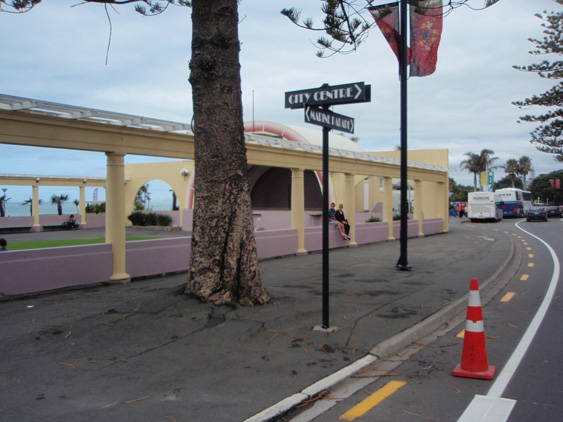 |
|
| |
Most of the center
of the city has stood intact after the rebuild, so you do not see very many
'modern' buildings sticking their ugly heads into the view. |
|
| |
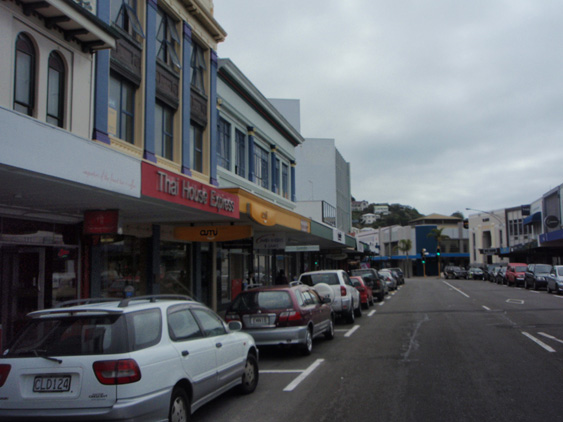 |
|
| |
And the buildings
all appear to be well maintained down every street we wander. |
|
| |
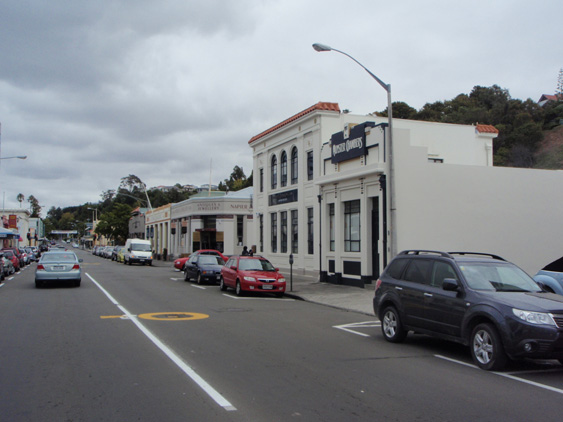 |
|
| |
Even the old theater
is still in good shape which is usually the first thing to fall into disrepair
in a city. |
|
| |
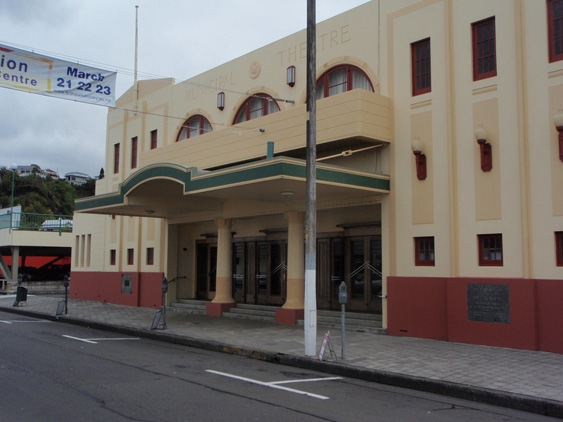 |
|
| |
And beside that,
Napier boasts it's very own 'Possum World'. Now what more could a feller
want besides that? |
|
| |
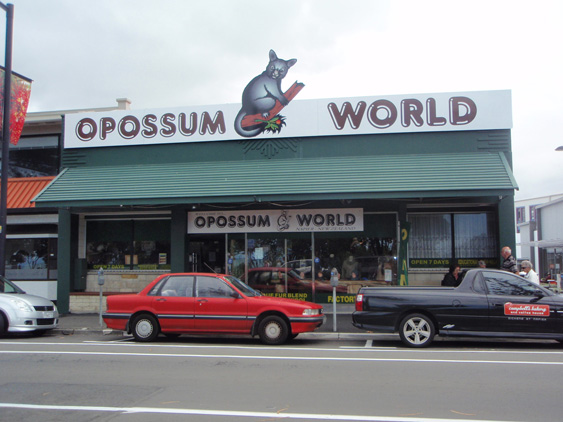 |
|
| |
On our way out we
make a quick fuel stop as we are uncertain if there will be fuel between
here and the farm stay. |
|
| |
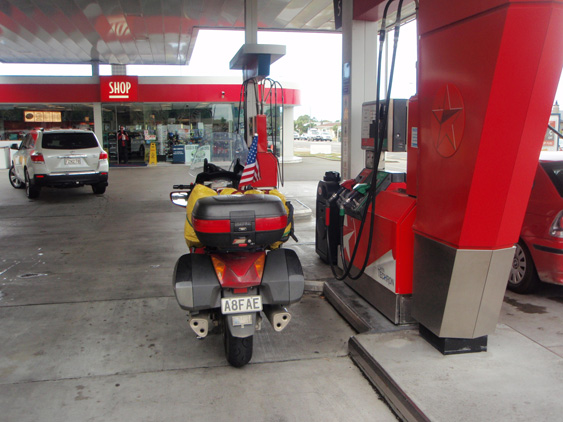 |
|
| |
It's a lovely run
down highway 50 to the Hawkes Bay Farm stay. |
|
| |
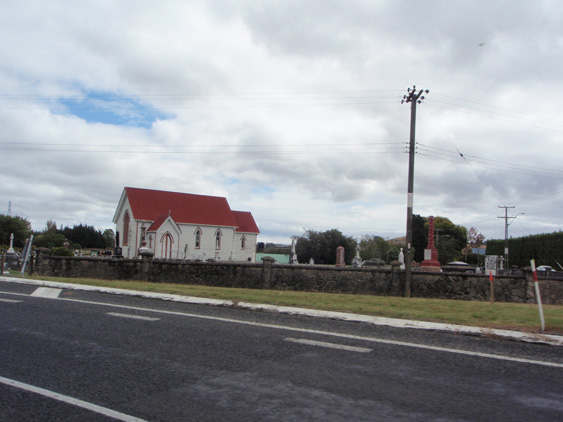 |
|
| |
We encounter more
vineyards on the way ... |
|
| |
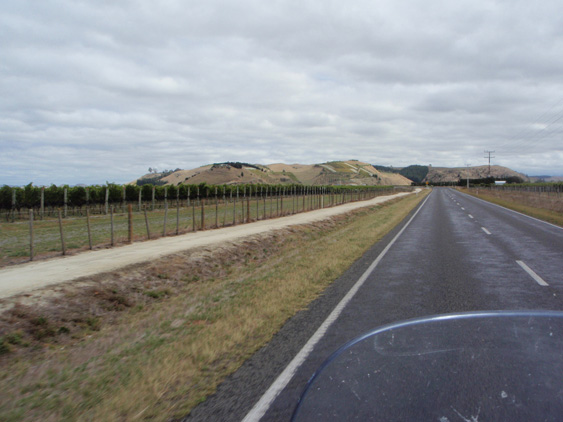 |
|
| |
some more lovely
twisties ... |
|
| |
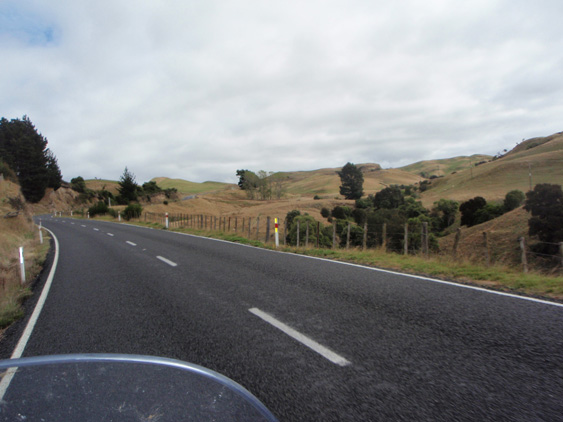 |
|
| |
and another one
lane bridge or two. |
|
| |
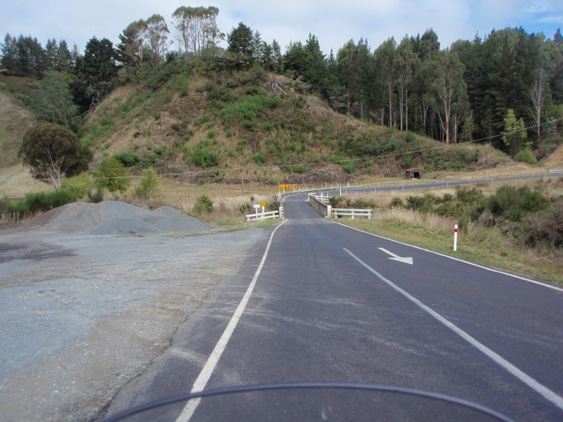 |
|
| |
The sky again looks
like we might be in for it, but we are getting close to the turn off so
we just keep rolling. |
|
| |
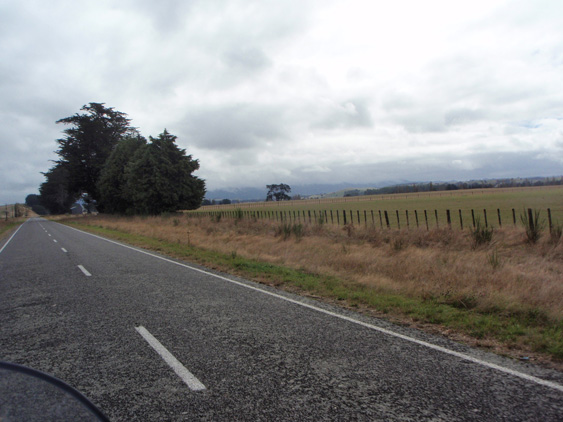 |
|
| |
At the turn off,
we encounter a wee bit of gravel ... that has been freshly graded. But you
just find a bare track and proceed cautiously. |
|
| |
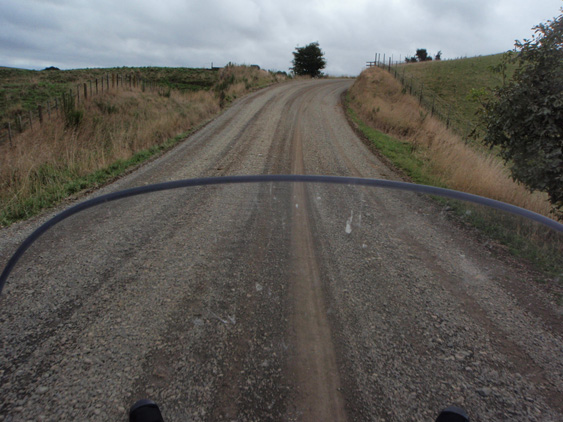 |
|
| |
And it is well worth
the challenge as the views are incredible. |
|
| |
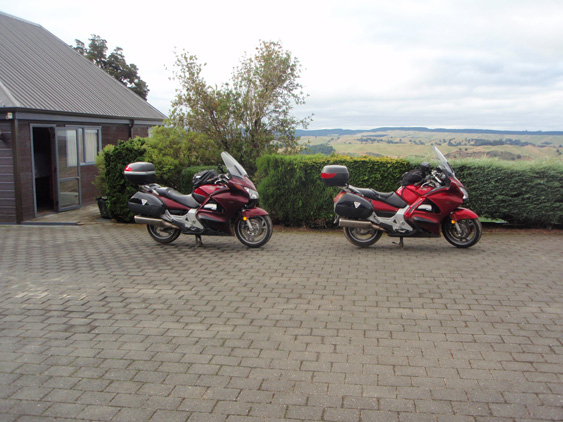 |
|
| |
And what a view
I have right out my bedroom window. Kay
and Vince Galbraith are our hosts and they have arranged for us
a tour of the nearby Smedley
Station and Cadet Training Farm. Jim, who is an overseer of the
station, gives us the tour.
|
|
| |
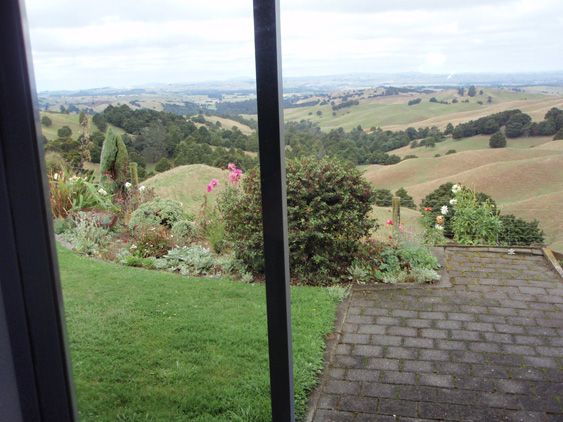 |
|
| |
The history of the place is
quite interesting -
Josiah Howard of Tikokino,
Hawke’s Bay the original owner of Smedley Station, died on the 5th
January 1919. He left his property to His Majesty the King without restriction,
but in the confidence that the Government of New Zealand would use the
property as a foundation or endowment for the purpose of agricultural
education. On the 24th of October 1919, the Howard Estate Act was passed
providing that Smedley Station be held by Public Trust in trust for the
Crown, as a permanent endowment for the purposes of agricultural education.
The first intake of 5 cadets arrived at Smedley Station in 1931 and over
the years the number taken on annually has been increased. Now 11 cadets
enter Smedley each year for the 2 year cadetship.
|
|
| |
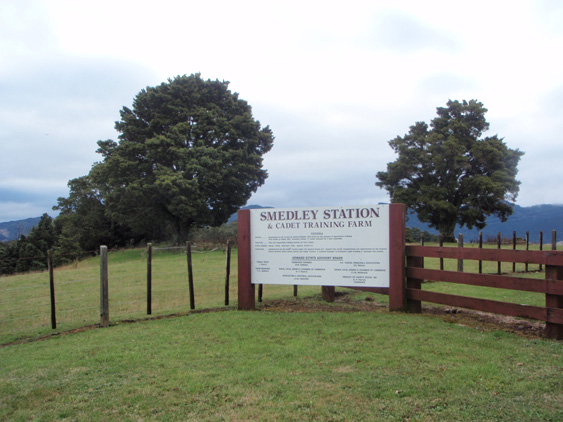 |
|
| |
Their list of former Cadets
is quite lengthy and impressive. Unlike so many 'educators' in the United
States, they still consider farming a fine and honorable profession and
concentrate on giving their cadets both classroom and hands on experience.
|
|
| |
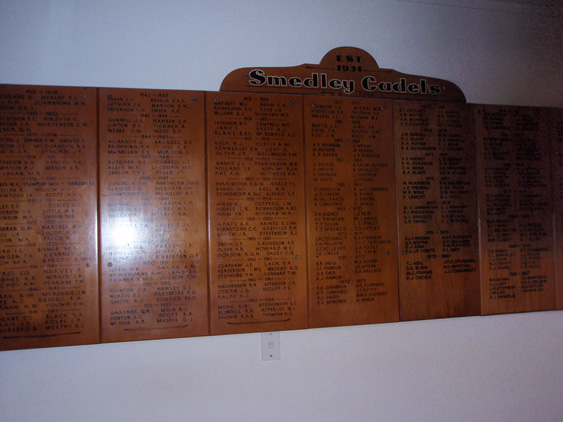 |
|
| |
The complete 'station' covers
5,054 hectares which is almost 12,500 acres.
|
|
| |
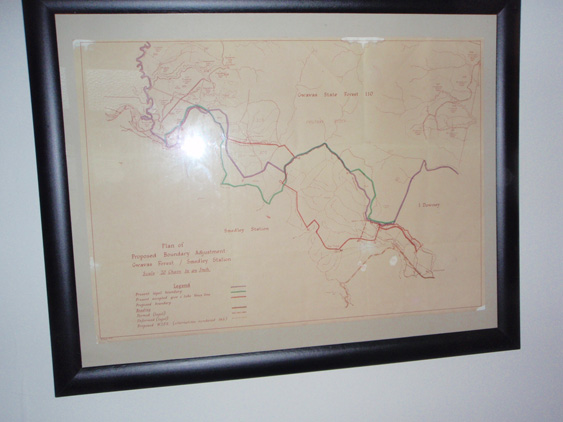 |
|
| |
The cadets over
the years converted one of the older out buildings into a fitting museum
of the station's history. The man in the picture on the left is Josiah Howard,
who bequeathed the origin plot of land for this purpose. |
|
| |
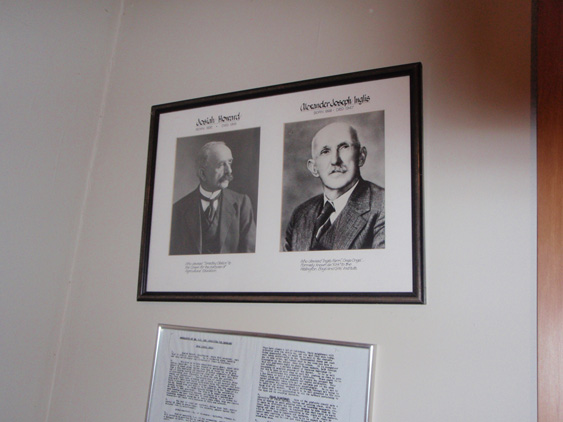 |
|
| |
They have the original
'phone' on display ... |
|
| |
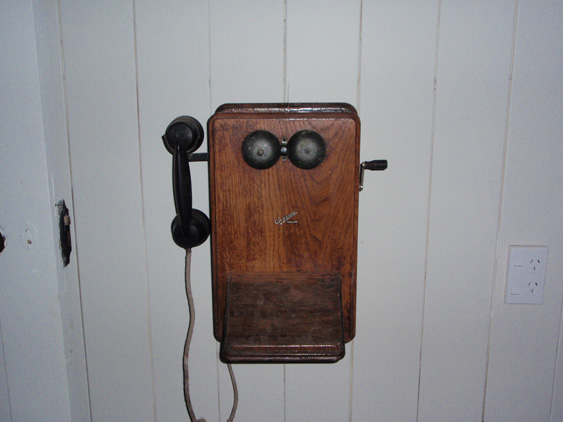 |
|
| |
in addition to many
of the implements used to work the station. |
|
| |
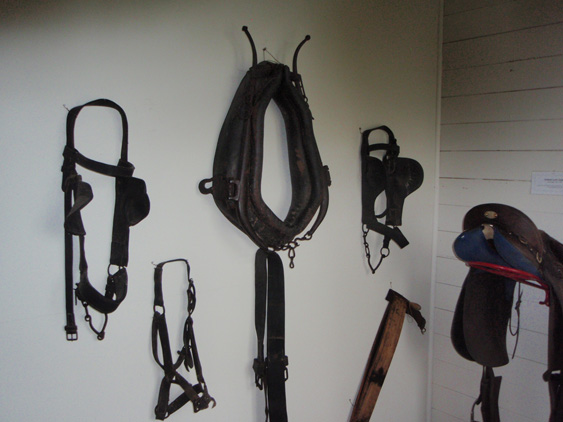 |
|
| |
This is the dining
room where each cadet gets to spend time cooking, cleaning and serving their
fellow workers when their time comes. |
|
| |
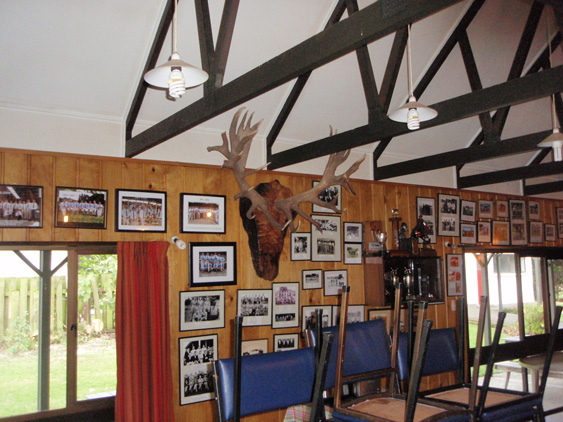 |
|
| |
Their barracks are
plain and typical for what you would expect on a working farm. |
|
| |
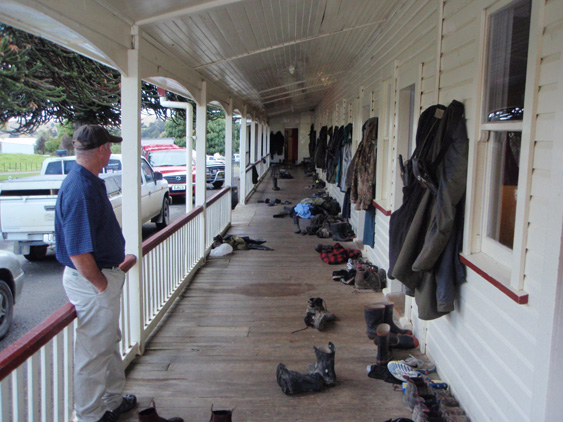 |
|
| |
Jim takes us over
the shearing sheds where the sheep that are raised on the station get their
'haircuts'. The clippers are powered by a single motor attached to the drive
shaft ... |
|
| |
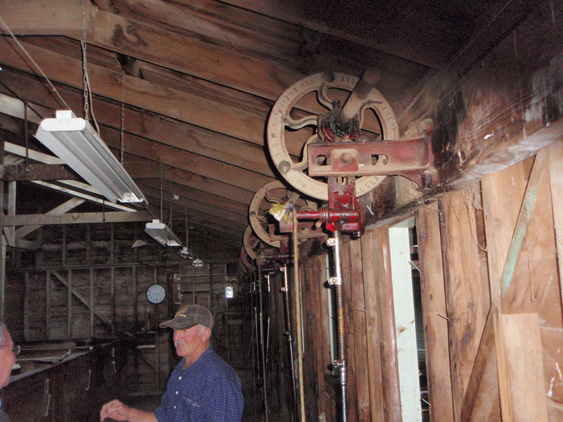 |
|
| |
which turns the
shafts that drive the clippers. |
|
| |
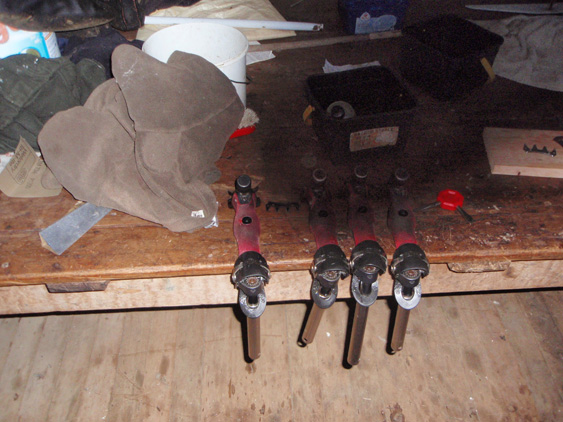 |
|
| |
Each set of clippers
vaguely resembled a barber's shears but with a different sort of 'teeth'
on them to deal with the thicker sheep's wool. |
|
| |
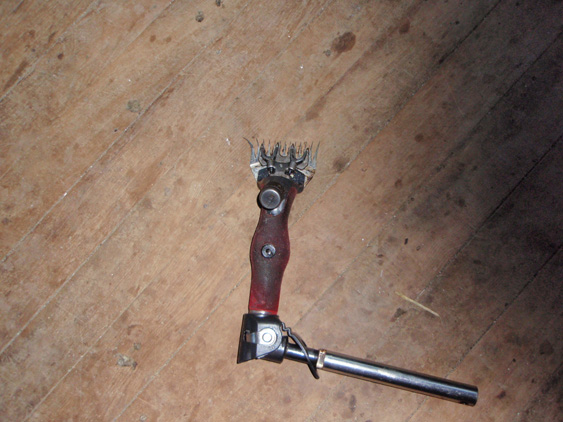 |
|
| |
These are the shearing
stalls where the sheep are led into for their 'clipping'. |
|
| |
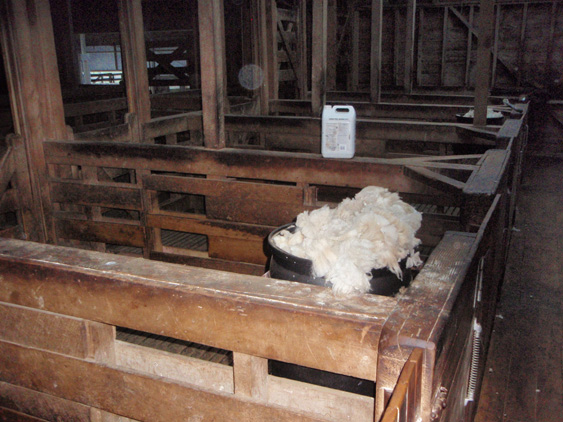 |
|
| |
Jim comes back with
us and we enjoy dinner with Leoni, his wife, Kay and Vince. And what a view
you get from this dining room!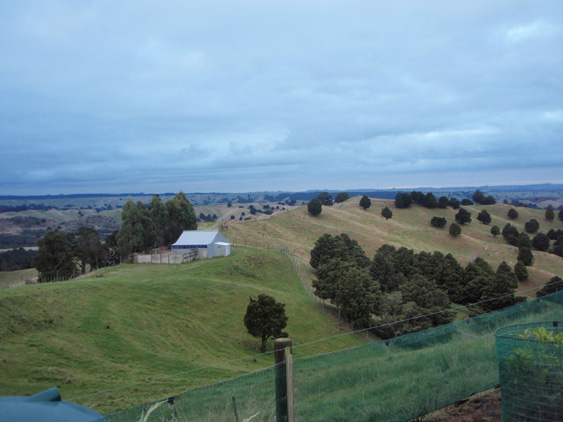 |
|
| |
The food is mighty
fine, most of it raised right here on the place. |
|
| |
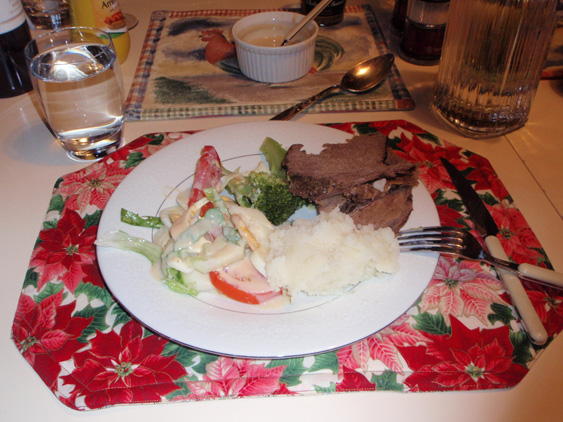 |
|
| |
We chat for a while,
but we've got a pretty good journey in the morning. So we wish our gracious
hosts a good night and find our way to our beds. This has been a day of
fascinating variety to say the least. But it doesn't take me very long to
find the place that I am seeking in earnest. |
|
| |
|
|
| |
|
|
| |
|
|
| |
|
|
| |
|
|
| |
|
|









































































